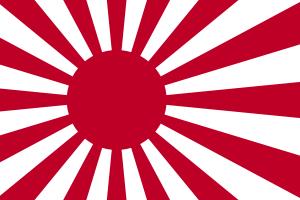The Imperial Japanese Navy Air Service (大日本帝國海軍航空隊, Dai-Nippon Teikoku Kaigun Kōkū-tai) was the air arm of the Imperial Japanese Navy during World War II. The organization was responsible for the operation of naval aircraft and the conduct of aerial warfare in the Pacific War.It was controlled by the Navy Staff of the Imperial Japanese Navy and the Navy Ministry. The Imperial Japanese Navy Air Service was equal in function to the Royal Navy's Fleet Air Arm (FAA), the U.S. Navy's Naval Aviation branch, the Italian Navy's Aviazione Ausiliara per la Marina, or the Soviet Navy's Morskaya Aviatsiya.The Imperial Japanese Navy Aviation Bureau (Kaigun Kōkū Hombu) of the Ministry of the Navy of Japan was responsible for the development and training.The Japanese military acquired their first aircraft in 1910 and followed the development of air combat during World War I with great interest. They initially procured European aircraft but quickly built their own and launched themselves onto an ambitious aircraft carrier building program. They launched the world's first purpose-built aircraft carrier, Hōshō, in 1922. Afterwards they embarked on a conversion program of several excess battlecruisers and battleships into aircraft carriers. The IJN Air Service had the mission of national air defence, deep strike, naval warfare, and so forth. It retained this mission to the end.The Japanese pilot training program was very selective and rigorous, producing a high-quality and long-serving pilot corps, who ruled the air in the Pacific during early World War II. However, the long duration of the training program, combined with a shortage of gasoline for training, did not allow the Navy to rapidly provide qualified replacements in sufficient numbers. Moreover, the Japanese, unlike the U.S. or Britain, proved incapable of altering the program to speed up training of the recruits they got. The resultant decrease in quantity and quality, among other factors, resulted in increasing casualties toward the end of the war.Japanese navy aviators, like their Army counterparts, preferred maneuverable aircraft, leading to lightly built but extraordinarily agile types, most famously the A6M Zero, which achieved its feats by sacrificing armor and self-sealing fuel tanks.

Fin de la actividad (año)
1945
Símbolo de identificación
100px



Comentar
0